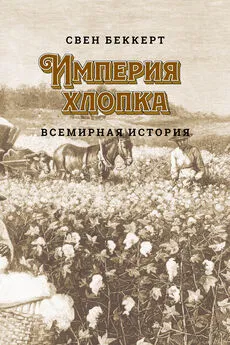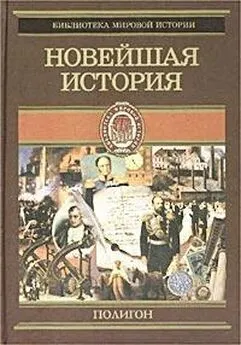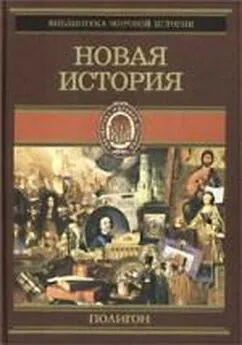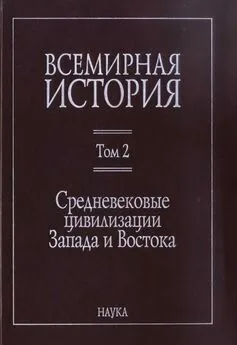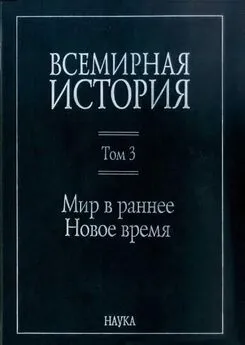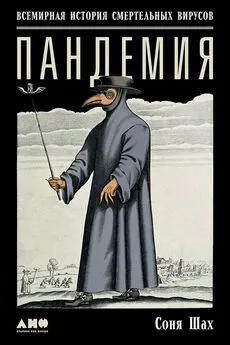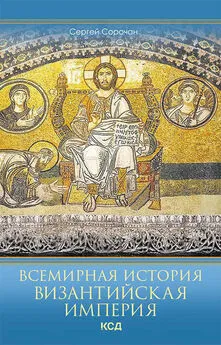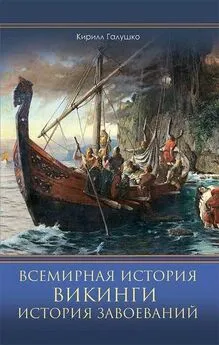Свен Беккерт - Империя хлопка. Всемирная история
- Название:Империя хлопка. Всемирная история
- Автор:
- Жанр:
- Издательство:неизвестно
- Год:неизвестен
- ISBN:978-5-93255-528-6
- Рейтинг:
- Избранное:Добавить в избранное
-
Отзывы:
-
Ваша оценка:
Свен Беккерт - Империя хлопка. Всемирная история краткое содержание
Империя хлопка. Всемирная история - читать онлайн бесплатно ознакомительный отрывок
Интервал:
Закладка:
80
Maureen Fennell Mazzaoui, The Italian Cotton Industry in the Later Middle Ages, 1100–1600 (Cambridge: Cambridge University Press, 1981), 157.
81
“Assessing the Slave Trade,” The Trans-Atlantic Slave Trade Database, доступ 5 апреля 2013 г., http://www.slavevoyages.org/tast/assessment/estimates.faces.
82
David Richardson, “West African Consumption Patterns and Their Influence on the Eighteenth-Century English Slave Trade,” in Henry A. Gemery and Jan S. Hogendorn, eds. The Uncommon Market: Essays in the Economic History of the Atlantic Slave Trade (New York: Academic Press, 1979), 304; Joseph C. Miller, “Imports at Luanda, Angola 1785–1823,” in G. Liesegang, H. Pasch, and A.Jones, eds. Figuring African Trade: Proceedings of the Symposium on the Quantification and Structure of the Import and Export and Long- Distance Trade in Africa 1800–1913 (Berlin, 1986), 164, 192; George Metcalf, “A Microcosm of Why Africans Sold Slaves: Akan Consumption Patterns in the 1770s,” Journal ofAfrican History 28, no. 3 (January 1, 1987): 378–80.
83
Harry Hamilton Johnston, The Kilima-Njaro Expedition: A Record of Scientific Exploration in Eastern Equatorial Africa (London, 1886), 45; цит. по: Jeremy Prestholdt, “On the Global Repercussions of East African Consumerism,” American Historical Review 109, no. 3 (June 1, 2004): 761, 765; Robert Harms, The Diligent: A Voyage Through the Worlds of the Slave Trade (New York: Basic Books, 2002), 81; Miles to Shoolbred, 25 July 1779, T70/1483, Public Records Office, London, цит. по: Metcalf, “A Microcosm of Why Africans Sold Slaves,” 388.
84
См. также: Carl Wennerlind, Casualties of Credit: The English Financial Revolution, 1620–1720 (Cambridge, MA: Harvard University Press, 2011); Adam Smith, An Inquiry into the Nature and Causes of the Wealth ofNations , bk. IV, ch. VII, pt. II, vol. II, Edwin Cannan, ed. (Chicago: University of Chicago Press, 1976), 75.
85
Mazzaoui, The Italian Cotton Industry , 162; Alfred P. Wadsworth and Julia De Lacy Mann, The Cotton Trade and Industrial Lancashire, 1600–1780 (Manchester: Manchester University Press, 1931), 116; Mann, The Cotton Trade of Great Britain , 5; Wolfgang von Stromer, Die Grundung der Baumwollindustrie in Mitteleuropa (Stuttgart: Hiersemann, 1978), 28; H. Wescher, “Die Baumwolle im Altertum,” in Ciba-Rundschau 45 (June 1940): 1644–45.
86
Wadsworth and Mann, The Cotton Trade , 11, 15, 19, 21, 72.
87
18. Ibid., 4, 5, 27, 29, 42, 55, 73. Эта тенденция в европейской сельской местности сначала появилась в обработке шерсти. См.: Herman van der Wee, “The Western European Woolen Industries, 1500–1750,” in David Jenkins, The Cambridge History of Western Textiles (Cambridge: Cambridge University Press, 2003), 399.
88
Wadsworth and Mann, The Cotton Trade , 36.
89
Mann, The Cotton Trade of Great Britain , 6; Edward Baines, History of the Cotton Manufacture in Great Britain (London: Fisher, Fisher and Jackson, 1835), 109; Bernard Lepetit, “Frankreich, 1750–1850,” in Wolfram Fischer et al., eds, Handbuch der Europaeischen Wirtschafts-und Sozialgeschichte , vol. 4 (Stuttgart: Klett-Verling fur Wissen und Bildung, 1993), 487.
90
Wadsworth and Mann, The Cotton Trade , 187.
91
Обзор этой торговли см.: Elena Frangakis-Syrett, “Trade Between the Ottoman Empire and Western Europe: The Case of Izmir in the Eighteenth Century,” New Perspectives on Turkey 2 (1988): 1–18; Baines, History of the Cotton Manufacture , 304; Mann, The Cotton Trade of Great Britain , 23. Эллисон ошибочно утверждает, что «приблизительно за двадцать лет до окончания прошлого века ввозимый в Великобританию хлопок почти полностью поступал из Средиземноморья, в основном из Смирны»; см.: Thomas Ellison, The Cotton Trade of Great Britain: Including a History of the Liverpool Cotton Market (London and Liverpool: Effingham Wilson, 1886), 81. О Салониках см.: Nicolas Svoronos, Le commerce de Salonique au XVIIIe siecle (Paris: Presses Universitaires de France, 1956); Manchester Cotton Supply Association, Cotton Culture in New or Partially Developed Sources of Supply: Report ofProceedings (Manchester: Cotton Supply Association, 1862), 30, Цит. по: Oran Kurmus, “The Cotton Famine and Its Effects on the Ottoman Empire,” in Huri Islamoglu-Inan, ed., The Ottoman Empire and the World-Economy (Cambridge: Cambridge University Press, 1987), 161; Resat Kasaba, The Ottoman Empire and the World Economy: The Nineteenth Century (Albany: State University of New York Press, 1988), 21. По поводу общего фона см. также: Bruce McGowan, Economic Life in Ottoman Europe: Taxation, Trade and the Strugglefor Land, 1600–1800 (Cambridge: Cambridge University Press, 1981).
92
Wadsworth and Mann, The Cotton Trade , 183; Treasury Department, T 70/1515, “Allotment of goods to be sold by the Royal African Company of England,” National Archives of the UK, Kew.
93
Wadsworth and Mann, The Cotton Trade , 186; Lowell Joseph Ragatz, Statistics for the Study of British Caribbean Economic History, 1763–1833 (London: Bryan Edwards Press, 1927), 22; Lowell Joseph Ragatz, The Fall of the Planter Class in the British Caribbean (New York: Century Co., 1928), 39.
94
Этот вопрос также подробно разбирается в отношении Османской империи в Elena Frangakis-Syrett, The Commerce of Smyrna in the Eighteenth Century (1700–1820) (Athens: Centre for Asia Minor Studies, 1992), 14; Svoronos, Le commerce de Salonique au XVIIIe siecle , 246.
95
Joseph E. Inikori, Africans and the Industrial Revolution in England: A Study in International Trade and Economic Development (New York: Cambridge University Press, 2002), 429–31.
96
Arasaratnam, “Weavers, Merchants and Company,” 100; K. N. Chaudhuri, The Trading World of Asia and the English East India Company, 1660–1760 (Cambridge: Cambridge University Press, 1978), 259; Debendra Bijoy Mitra, The Cotton Weavers of Bengal, 1757–1833 (Calcutta: Firma KLM Private Limited, 1978), 5; Prasannan Parthasarathi, “Merchants and the Rise of Colonialism,” in Burton Stein and Sanjay Subrahmanyam, eds., Institutions and Economic Change in South Asia (Delhi: Oxford University Press, 1996), 89.
97
Arasaratnam, “Weavers, Merchants and Company,” 85; Diary, Consultation, 18 January 1796, in Surat Factory Diary No. 53, part 1, 1795–1796, Maharashtra State Archive, Mumbai; важность экономической и политической власти также подчеркивает Mitra, The Cotton Weavers ofBengal , 4; B. C. Allen, Eastern Bengal District Gazetteers: Dacca (Allahabad: Pioneer Press, 1912), 38–39; Subramanian, Indigenous Capital , 202–3, 332.
98
K. N. Chaudhuri, “The Organisation and Structure of Textile Production in India,” in Roy, Cloth and Commerce , 59.
99
Commercial Board Minute laid before the Board, Surat, 12 September 1795, in Surat Factory Diary No. 53, part 1, 1795–1796, Maharashtra State Archive, Mumbai.
100
Копия письма Gamut Farmer, President, Surat, to Mr. John Griffith, Esq., Governor in Council Bombay, 12 December 1795, in Surat Factory Diary No. 53, part 1, 1795–1796, Maharashtra State Archive, Mumbai; Arasaratnam, “Weavers, Merchants and Company,” 86; Board of Trade, Report of Commercial Occurrences, 12 September 1787, in Reports to the Governor General from the Board of Trade, RG 172, Box 393, Home Miscellaneous, India Office Records, British Library, London; Letter from John Griffith, Bombay Castle to William [illegible], Esq., Chief President, 27 October 1795, in Surat Factory Diary No. 53, part 1, 1795–1796, Maharashtra State Archive; Hossain, “The Alienation of Weavers,” 121, 125; Mitra, The Cotton Weavers of Bengal , 9; Dispatch, London, 29 May 1799, in Bombay Dispatches, E/4, 1014, Oriental and India Office Collections, British Library, London.
101
Parthasarathi, “Merchants and the Rise of Colonialism,” 99–100; Arasaratnam, “Weavers, Merchants and Company,” 107, 109; Chaudhuri, “The Organisation and Structure of Textile Production in India,” 58–59; Chaudhuri, The Trading World ofAsia and the English East India Company , 261.
102
Arasaratnam, “Weavers, Merchants and Company,” 102, 107; Mitra, The Cotton Weavers of Bengal , 48; Hossain, “The Alienation of Weavers,” 124–25.
103
Bowanny Sankar Mukherjee цит. по: Hossain, “The Alienation of Weavers,” 129; по этому пункту см.: Om Prakah, “Textile Manufacturing and Trade Without and with Coercion: The Indian Experience in the Eighteenth Century” (unpublished paper, Global Economic History Network Conference Osaka, December 2004), 26, http://www.lse.ac.uk/economicHistory/Rese-arch/GEHN/GEHNPDF/PrakashGEHN5.pdf; Hossain, The Company Weavers of Bengal , 52; Vijaya Ramaswamy, Textiles and Weavers in South India (New York: Oxford University Press, 2006), xiii, 170; Copy of Letter from Board of Directors, London, 20 April, 1795, to our President in Council at Bombay, in Surat Factory Diary No. 53, part 1, 1795–1796, in Maharashtra State Archive, Mumbai.
104
Важность сопротивления также подчеркивал Mitra, The Cotton Weavers ofBengal , 7; важность мобильности подчеркивал Chaudhuri, The Trading World ofAsia and the English East India Company , 252; Arasaratnam, “Weavers, Merchants and Company,” 103; см.: Details Regarding Weaving in Bengal, Home Miscellaneous Series, 795, pp. 18–22, India Office Library, British Library, London.
105
Commercial Board Minute laid before the Board, Surat, 12 September 1795, in Surat Factory Diary No. 53, part 1, 1795–1796, Maharashtra State Archive, Mumbai; Homes Miscellaneous Series, 795, pp. 18–22, Oriental and India Office Collections, British Library, London. См. также: Parthasarathi, “Merchants and the Rise of Colonialism,” 94.
106
Amalendu Guha, “The Decline of India’s Cotton Handicrafts, 1800–1905: A Quantitative Macro-study,” Calcutta Historical Journal 17 (1989): 41–42; Chaudhuri, “The Organisation and Structure of Textile Production in India,” 60; Количество работающих ткачей в 1786–87 годах в Дакке и вокруг нее оценивалось в 16 403 человек. Homes Miscellaneous Series, 795, pp. 18–22, Oriental and India Office Collections, British Library, London; Diary, Consultation, 18 January 1796, in Surat Factory Diary No. 53, part 1, 1795–1796, Maharashtra State Archive, Mumbai.
Читать дальшеИнтервал:
Закладка:
